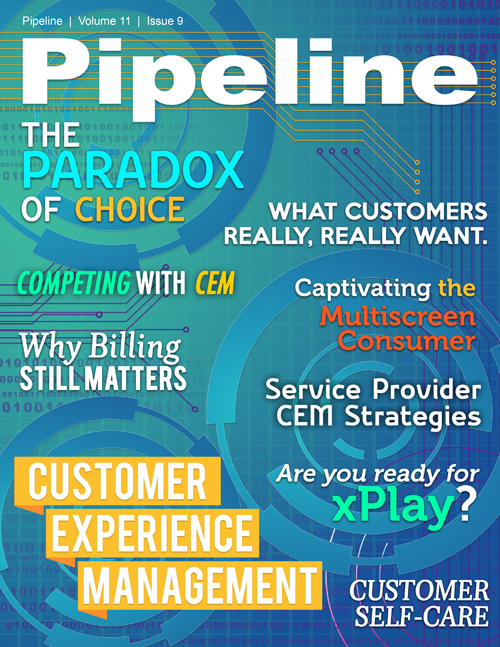Captivating the Multiscreen Consumer
By: Chad Dunavant

With 77 percent of viewers engaging with (at least!) a second screen like a smartphone or tablet while watching TV, video providers are exploring new customer engagement strategies designed to attract multiscreen consumers. In their first iterations, many of these experiences...or just plain apps...have focused on games, episode details, schedules and information. Very quickly, however, these first steps must be replaced with multiscreen strategies that offer a synchronized and complementary experience across devices, including content search, browsing, sampling and, most importantly, easy-payment transactions.
Engaging customers and creating a compelling experience across screens is the keystone of a provider’s digital content strategy, and getting it right is the key to staying relevant and profitable in the digital services era. To do so, service providers need to strengthen their customers’ experience and expand their offerings across devices without uprooting or impacting existing systems.
Delivering digital services anywhereThe TV and video value chain has changed in the past few years, and will continue to evolve in a dramatic fashion. Viewers increasingly avail themselves of numerous options for watching video content. Smartphones and tablets are as important for video consumption as they are as platforms for messaging, internet access and communications. The television, the first device dedicated to personal video viewing, has become “smart” by incorporating media support beyond video, including internet access, messaging, gaming and communications. Television, smartphone, and tablet differences essentially have all but vanished but for the size of the viewing screen. And the commonality and feature convergence of these entertainment platforms have shifted the structure of the industry.
In three years, video will represent more than 70% of all global network traffic. Network operators, be they fixed, wireless or cable, continue to invest significantly to increase their reach, speeds and capacity to enable this world of connectivity dominated by video. Meanwhile OTT providers are making similar investments in order to establish similar customer relationships where they previously may have had none and deliver the same content. Investments in network infrastructure go hand-in-hand with the need to adopt business models that support the value chain adjustments. The goal: to continue to be a relevant, branded provider of entertainment and communications services to their customers.
After all, the way that customers watch TV is changing. Customers watch video on multiple devices, and these devices both complement and compete with each other for the viewer’s attention. Complementary habits of multi-device viewers include doing these things while watching TV: visiting social networks, surfing the internet for non-TV-related information, and playing games. Competing activity is epitomized by the behavior of getting off the living room couch and watching the content from another source, another distributor or aggregator, and increasingly from the programmer directly in another room or on the go. ,
The younger generation of TV viewers have *never* paid for service and are most likely to get their video from multiple sources. They believe that pay TV services are too expensive and that they are paying for something they don’t need. And yet, the market for premium long-form video remains strong. We’re still watching. The average number of daily minutes of TV watching hasn’t changed much in mature western markets. In the USA, that’s about 4.5 hours a day. And the holy grail, for both traditional cable operators and relative newcomers like OTT providers, is to deliver an exceptional customer experience, supporting both the viewer’s traditional requirements for high-quality and compelling content and these new requirements alike in order to sustain and grow that relationship.
Getting it right
The service provider who delivers critical capabilities for the new entertainment business model can achieve success. And the focus needs to be on getting three of those capabilities ready for business as quickly as possible:
1. Customer-facing capabilities
To support multi-screen behavior, the early iterations of branded entertainment portals primarily supported complementary activity relevant to what happened on the TV. Surfing? Here’s information about the program you’re watching. Gaming? Here’s how you can engage with online voting and gaming elements as part of the program’s brand.



















